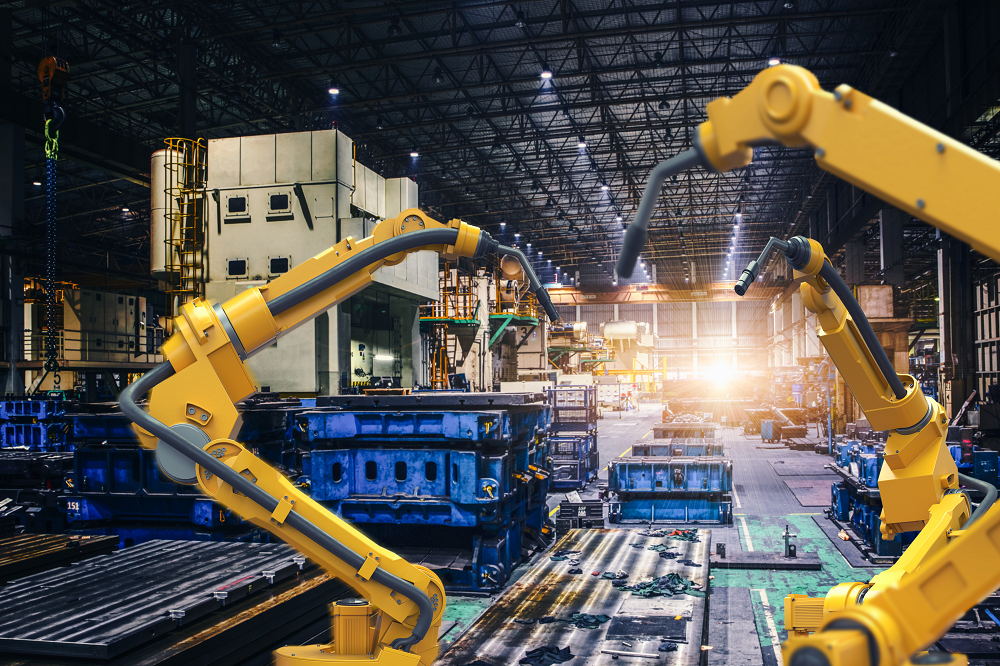Manufacturing technology, environmental laws, and consumer demand are changing dramatically, and practices considered normal now might be antiquated by 2030.
The digital revolution is transforming manufacturing and advancing the industry. Innovations like AI, cloud computing, and automation stand to dramatically improve operational intelligence, analytics, throughput, performance, and profitability. With increasingly intense margin pressure, manufacturers may be unable to compete without these technologies, and the time to invest is now. Regulators and consumers are also placing increasing pressure on manufacturers to mitigate carbon emissions and reduce environmental impact, requiring significant changes to materials and manufacturing processes they’ve long used. It’s crucial to stay ahead of these changes.
“Future-proofing” is the act of investing and planning ahead to minimize the impact of potential market shifts. Manufacturers should prioritize improving profit margins in every area possible to free up resources to invest in greater automation, as well as weather any challenging periods that may come now and in the future.
There are many solutions manufacturers can implement right now to get a head start on the automation revolution — and fortunately, all of them can generate return on investment (ROI) quickly. Here are five to start with:
1. Fully Digitize Operations
Before any company thinks about investing in automation equipment, they should make sure they’ve eliminated paper-based workflows. All handwritten spreadsheets, forms, and records should be digitized for traceability and to avoid repetitive data entry. Secure, cloud-based recordkeeping makes it easier for companies to collect, share, and store information, improving operational efficiency. More importantly, digitization enables further automation.
2. Install Collaborative Robots
There’s already a significant labor shortage, with the US Bureau of Labor Statistics estimating an average of 500,000 manufacturing jobs open at any given time. As more skilled workers retire, those problems will only intensify. Manufacturers can avoid sudden crunches in the future by installing collaborative robots now. This machinery can augment the existing workforce to increase productivity levels or maintain efficiency with a smaller labor pool. The cost savings will also make it easier to invest in automation at a larger scale further down the line, which could enable lights-out manufacturing in the future.
3. Invest in Cybersecurity
As more data is stored in the cloud, and more equipment becomes connected to the internet, operations are increasingly vulnerable to data theft or hacking. Many automation platforms will have their own defenses built in, but a robust cyber security program is critical. Consult with IT experts to see if you need to invest in any specific hardware or software.
4. Diversify Manufacturing
Diversification is one of the best ways to keep operations agile in shifting markets. This can help manufacturers leverage reshoring demand. Incorporating additive manufacturing can help create additional revenue streams and set manufacturers up for bigger pivots into the field when the technology becomes more commercially viable. By investing in technologies such as additive manufacturing machines alongside an already robust traditional manufacturing environment, manufacturers can employ rapid prototyping and use the machines for production with new and existing customers.
5. Improve Sustainability
Beyond the rise of automation, both regulators and end-users are paying more attention to eco-friendly manufacturing. New policies are being implemented globally about material usage and manufacturing practices to curb carbon emissions. Consumers are also paying attention to sustainability across the supply chain, pressuring companies to work with sustainable suppliers and reduce environmental impact in all areas.
Manufacturers can improve their sustainability footprint by adopting biobased cutting fluids like TRIM® HyperSol™ 888NXT and practicing stringent coolant maintenance that reduces waste. Sustainability is key to future-proofing manufacturers’ reputation, brands, and relationships with regulators. In addition to conserving resources, these materials and practices reduce waste stream costs and further increase profits.
With technology advancements, the world is changing rapidly, but fortunately there are clear indicators of where manufacturing is headed. It’s important for companies to invest accordingly so they’re not left behind by new technologies, new market demands, and new regulations. To learn more about how advanced cutting fluids can help create more future-proof operations, call +1 800-537-3365 or email us at info@masterfluids.com.

